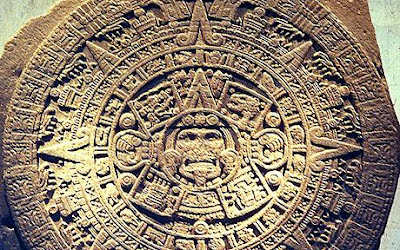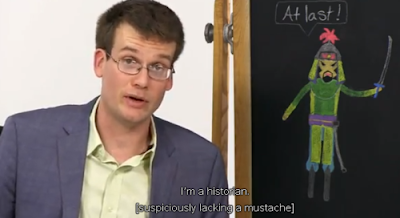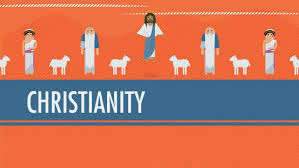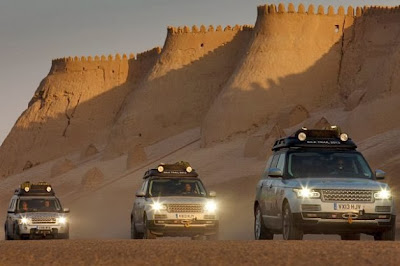Agenda: Oct. 7th-11th
Week at a Glance:
Monday- Classical Empire Project Prep
Tuesday- Final day of project prep
Wednesday- Presentations
Thursday-
How to WHAP the DBQ
Friday- DBQ Posters
Weekend- Chapter 7...Reading Quiz Tuesday.
Learning Targets:
Also, Students will know what is expected of them on the AP Test FRQ - Document Based Question.
Thesis, Supporting evidence, Grouping Documents, Document Analysis with context/point of view will be emphasized.
Essential Questions:
Why do we write the DBQ - Document Based Question?
How do you determine the Point of View.
What ways should documents be grouped in order to mention all of them, yet write a concise essay with a thesis statement that answers the prompt.
Monday, Oct. 7th, 2013
Quote of the Day: "You can’t use up creativity. The more you use, the more you have." –Maya Angelou
Agenda: Classical Empires Project Preparation
|
Classical
Era Class Project
500
b.c.e-500 c.e.
Goal:
·
Explore political, cultural and social
structures in Classical Eurasia.
·
Consider what made the structures above
different in varying Classical Civilizations.
·
Explore the nature of Classical Patriarchy and
its variations.
End-Product:
By creating a
product and presentation to convince your classmates to live in your Empire of
the Classical Era. You should make a
compelling sales pitch. Do NOT forget to
voice your opinion regarding Eurasian competitors.
5 Teams:
1.
Greek Polis- Athens
2.
Greek Polis- Sparta
3.
Roman Empire
4.
Hand Dynasty of China
5.
Mauryan Empire of India
I.
Thou
shalt not neglect any disciple of thy covenant.
(Full participation)
II.
Thou shalt praise thrice ways the superiority of
thy Empire. (3 reasons why your best)
III.
Thou shalt smite the infidels of foreign
empires. (1 reason why other empires are weakest)
IV.
Thou shalt praise thrice thy empire by citing the
Holy Source of Primary.
V.
Thou shalt praise thy empire for no less than 5
minutes and no more than 10.
VI.
Thou shalt construct monuments in praise of thy
empire in the form of the following:
-Advertisement/Travel Poster
-Advertisement/Travel Brochure
-Video
-Prezi/PowerPoint/GoogleDocs Presentation
-Rap song
-Any other
approved by the AP High Priest, His Holiness and Eminence, the Majestic Monk
Guru Dalai Lama Brahmin Saint Anthony Mers of Waukegan.
Main
Focus Points: Use Strayer and other
sources to highlight factors such as:
-
Social
Mobility - Role of women
-
Stability and security of your empire - Slavery
-
Patriarchy -Class/Caste
system
-
Government - Military strength
-
Social order -Religion/Cultural
Traditions
-
Education - Resources (land, geography, Nat. Resources)
-
Trade/Economic Power - Technology
Tuesday, Oct. 8th, 2013
Quote of the Day: "You miss 100% of the shots you don’t take." –Wayne Gretzky
Agenda: Continue project preparation
Wednesday, Oct. 9th, 2013
Quote of the Day: "I’ve missed more than 9000 shots in my career. I’ve lost almost 300 games. 26 times I’ve been trusted to take the game winning shot and missed. I’ve failed over and over and over again in my life. And that is why I succeed." –Michael Jordan
Agenda: Project presentations
Thursday, Oct 10th, 2013
Quote of the Day: "There is only one way to avoid criticism: do nothing, say nothing, and be nothing." –Aristotle
Agenda:
1. Notes- How to WHAP the DBQ
2. Pick up the DBQ on your way out.
3. Over night, read the DBQ and consider the steps outlined in your notes in making any notes/annotations
Friday, Oct 11th, 2013
Quote of the Day: "Start where you are. Use what you have. Do what you can." –Arthur Ashe
Agenda:
1. DO NOW: Prepare your DBQ packet for use today in groups.
2. DBQ Posters: Students will work in groups to create quick posters to represent
3. Present Posters - Silent Gallery Walk.
World History AP with Mr. Mers - Learning Targets
Part 2 - The Classical Era in World History, 500 B.C.E. - 500 C.E.
Chapter 7 - Classical Era Variations: Africa and the Americas 500 B.C.E.–1200 C.E.
Learning Targets
- Analyze classical civilizations that evolved outside of the more well-known civilizations of Eurasia
- Compare the development of civilizations in Africa and the Americas
- Examine the factors that make civilizations develop andanalyze why they develop differently in some regions
- Distinguish the characteristics of complex civilizations and judge whether they could develop without any recognizable centralized control
Big Picture Questions
1. “The histories of Africa and the Americas during the classical era largelyresemble those of Eurasia.” Do you agree with this statement? Explain why or why not.
2. “The particular cultures and societies of Africa and of the Americas discussed in this chapter developed largely in isolation from one another.” What evidence would support this statement, and what might challenge it?
3. What generated change in the histories of Africa and the Americas during the classical era?
Margin Review Questions
1. How did the history of Meroë and Axum reflect interaction with neighboring civilizations?
2. How does the experience of the Niger Valley challenge conventional notions of “civilization”?
3. In what ways did the arrival of Bantu-speaking peoples stimulate cross-cultural interaction?
4. With what Eurasian civilizations might the Maya be compared?
5. In what ways did Teotihuacán shape the history of Mesoamerica?
6. What kind of influence did Chavín exert in the Andes region?
7. What features of Moche life characterize it as a civilization?
8. In what ways were the histories of the Ancestral Pueblo and the Mound Builders similar to each other, and how did they differ?
Key Terms
Ancestral Pueblo: Formerly known as the Anasazi, this people established a mixed agricultural and gathering/hunting society in the southwestern part of North America. (pron. PWAY-blow)
Apedemek: The lion god of classical Meroë; his popularity shows a turn away from Egyptian cultural influence. (pron. ah-PED-eh-mek)
Axum: Classical-era kingdom of East Africa, in present-day Eritrea and northern Ethiopia; flourished from 100 to 600 c.e. (pron. AX-uhm)
Bantu expansion: Gradual migration of Bantu-speaking peoples from their homeland in what is now southern Nigeria and the Cameroons into most of eastern and southern Africa, a process that began around 3000 b.c.e. and continued for several millennia. The agricultural techniques and ironworking technology of Bantu-speaking farmers gave them an advantage over the gathering and hunting peoples they encountered. (pron. BAHN-too)
Batwa: Forest-dwelling people of Central Africa who adopted some of the ways of their Bantu neighbors while retaining distinctive features of their own culture; also known as “Pygmies.” (pron. BAHT-wah)
Cahokia: The dominant center of an important Mississippi valley mound-building culture, located near present-day St. Louis, Missouri; flourished from about 900 to 1250 c.e. (pron. cah-HOKE-ee-ah)
Chaco Phenomenon: Name given to a major process of settlement and societal organization that occurred in the period 860–1130 c.e. among the peoples of Chaco canyon, in what is now northwestern New Mexico; the society formed is notable for its settlement in large pueblos and for the building of hundreds of miles of roads (the purpose of which is not known). (pron. CHAH-koh)
Chavín: Andean town that was the center of a large Peruvian religious movement from around 900 to 200 b.c.e. (pron. cha-BEAN)
Coptic Christianity: The Egyptian variety of Christianity, distinctive in its belief that Christ has only a single, divine nature.
Ezana: King of Axum in the early fourth century c.e. who established Christianity in his state. (pron. eh-TZAHN-ah)
Hopewell culture: Named from its most important site (in present-day Ohio), this is the most elaborate and widespread of the North American mound-building cultures; flourished from 200 b.c.e. to 400 c.e.
Jenne-jeno: Largest and most fully studied of the cities of the Niger Valley civilization. (pron. JENNay JENN-oh)
Maya: The major classical civilization of Mesoamerica; flourished from 250 to 900 c.e.
Meroë: City in southern Nubia that was the center of Nubian civilization between 300 b.c.e. and 100 c.e. (pron. MER-oh-ee)
Moche: An important regional civilization of Peru, governed by warrior-priests; flourished from around 100 to 800 c.e. (pron. MO-che)
Mound Builders: Members of any of a number of cultures that developed east of the Mississippi River in what is now the United States and that are distinguished by their large earthen mounds, built during the period 2000 b.c.e. –1250 c.e.
Nazca: A civilization of southern coastal Peru, the Nazca became famous for their underground irrigation channels and their gigantic and mysterious lines in the desert in the form of monkeys, birds, spiders, and other designs. (pron. NAHZ-kah)
Niger Valley civilization: Distinctive city-based civilization that flourished from about 300 b.c.e. to about 900 c.e. in the floodplain of the middle Niger and that included major cities like Jenne-jeno; the Niger Valley civilization is particularly noteworthy for its apparent lack of centralized state structures, having been organized instead in clusters of economically specialized settlements.
pueblo: “Great house” of the Ancestral Pueblo people; a large, apartment building–like structure that could house hundreds of people.
“semi-sedentary”: Term frequently used to describe the peoples of the eastern woodlands of the United States, Central America, the Amazon basin, and the Caribbean islands who combined partial reliance on agriculture with gathering and hunting.
Teotihuacán: The largest city of pre-Columbian America, with a population between 100,000 and 200,000; seemingly built to a plan in the Valley of Mexico, Teotihuacán flourished between 300 and 600 c.e., during which time it governed or influenced much of the surrounding region. The name Teotihuacán is an Aztec term meaning “city of the gods.” (pron. teh-o-tee-WAH-kahn)
Tikal: Major Maya city, with a population of perhaps 50,000 people. (pron. TEE-kal)
Period 2: Organization & Reorganization of Human Societies, c. 600 BCE to c. 600 CE
Key Concept 2.1 The Development & Codification of Religious & Cultural Traditions
I. Codifications of existing religious traditions create a bond among the people & an ethical code
A. Judaism developed
1. Influenced by Mesopotamian culture &legal traditions
2. Conquered by political states led todiaspora communities
B. Sanskrit scriptures formed Hinduism(s)
II. New belief systems emerged & spread, often asserting universal truths.
A. Buddhism
B. Confucianism
C. Daoism
D. Christianity
E. Greco-Roman philosophy & science
III. Belief systems affected gender roles
IV. Other religious/traditions continued parallel towritten belief systems.
A. Shamanism & animism
B. Ancestor veneration
V. Artistic expressions, including literature & drama, architecture, & sculpture.
A. Literature & drama
B. Indian, Greek, Mesoamerican, &Roman architectural styles.
C. Greco-Roman sculpture, syncretism w/ Buddhism
Key Concept 2.2 The Development of States & Empires
I. Imperial societies grew dramatically.
A. Persian Empires
B. Qin & Han dynasties
C. Maurya & Gupta Empires
D. Phoenician & Greek colonies/colonization, Hellenistic &Roman Empires
E. Teotihuacan, Maya city states
F. Moche
II. Empires & states developed new techniques of imperial administration
A. Rulers created centralized governments, elaboratelegal systems, & bureaucracies.
B. Imperial governments projected military power
C. Much of the success of empires rested on their promotion oftrade & economic integration
III. Unique social & economic dimensions developed inimperial Societies.
A. Function of Cities
1. centers of trade
2. religious rituals
3. political administration
B. Social hierarchies 1) cultivators; 2) laborers; 3) slaves; 4) artisans; 5) merchants; 6) elites; 7) caste groups.
C. Methods used to produce food, rewards for elites.
D. Patriarchy continued to shape gender & family relations.
IV. Roman, Han, Mauryan, & Gupta declined, collapsed, transformed into successor empires or states.
A. Empires caused environmental damage & generatedsocial tensions & economic difficulties.
B. External problems resulted from the threat of invasions
Key Concept 2.3 Emergence of Trans Regional Networks of Communication & Exchange
I. Hemispheric trade, communication & exchange networks impacted climate & location of the routes, the typical trade goods, & the ethnicity of people
A. Eurasian Silk Roads
B. Trans-Saharan caravan routes
C. Indian Ocean sea lanes
D. Mediterranean sea lanes
II. New technologies led to long-distance communication & exchange.
A. New technologies led to domesticated pack animals, promoted longer routes.
B. Maritime technologies, monsoon winds
III. Intangible Trade Networks
A. crops led to changes in farming & irrigation
B. Diseases decreased urban populations, also decreased empires (Rome & Han)
C. Religious & cultural






































